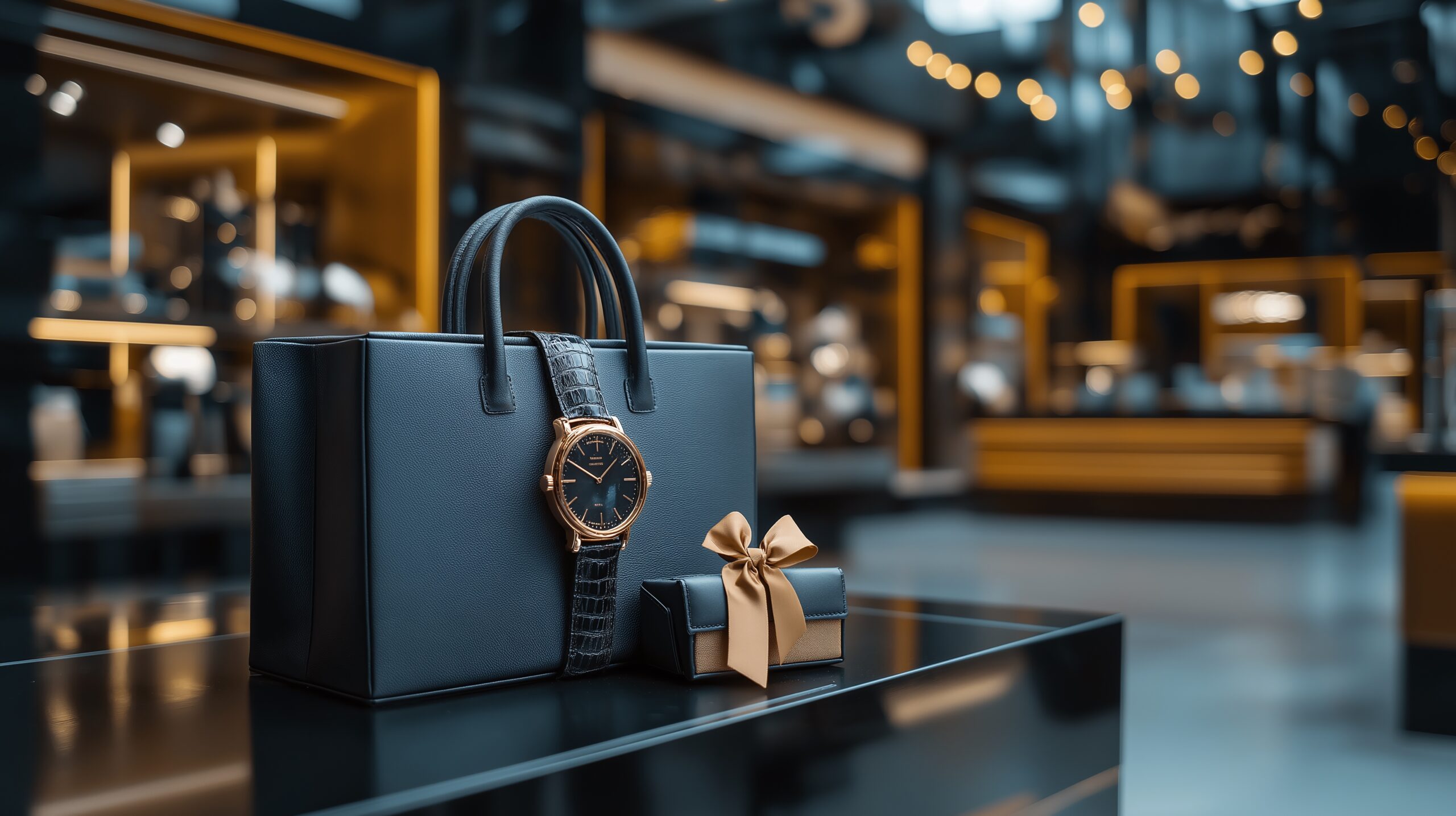How can luxury brands maintain their iconic identity while adapting to the cultural expectations of diverse global markets? What are the risks of cultural missteps in global branding, and how can luxury brands avoid them? How does cultural intelligence shape a successful global branding strategy for luxury brands, ensuring both relevance and authenticity?
In the world of luxury, a brand’s identity is its most valuable asset – but expanding globally presents a unique challenge: how can brands remain true to their heritage while resonating with diverse cultural audiences? A campaign that captivates consumers in Milan may offend audiences in Beijing, and an exclusive product launch in New York may feel out of touch in the Middle East. True global branding success in luxury requires more than translation or surface-level localization; it demands deep cultural intelligence. Understanding local values, symbols, and consumer behaviors enables luxury brands to craft meaningful connections, ensuring long-term success and avoiding costly missteps.
Cultural misinterpretations can lead to serious consequences, from consumer backlash to lasting reputational damage. However, luxury brands that navigate cultural nuances skillfully while maintaining their global branding consistency gain a competitive edge. Whether through strategic local partnerships, digital adaptation, or regionally tailored sustainability efforts, brands that invest in cultural intelligence can elevate their market positioning. In an era where authenticity and exclusivity define luxury, cultural intelligence is no longer optional – it is the foundation of a truly successful global luxury brand strategy.
Table of Contents:
Cultural Missteps: Major Consequences
Balancing Adaptation: Avoiding Brand Dilution
Regulatory Challenges: Navigating Complex Local Landscapes
Building Cultural Intelligence: Strategic Approaches for Global Luxury Brands
Research to Uncover Cultural Nuances
Digital and Social Media Adaptation
Sustainability Through a Cultural Lens
Local Partnerships: Building Authentic Connections
Feedback Mechanisms: Listening, Learning, and Adapting
Regional Spotlights: Cultural Intelligence Applications Across Key Luxury Markets
Introduction
As luxury brands expand into new markets globally, they face a challenge: How do they preserve their iconic identity while resonating with diverse cultural expectations? A campaign that resonates in Paris may spark controversy in Shanghai. A product celebrated in New York may be rejected in Dubai. In an era where missteps can go viral within seconds, even the most established luxury house can stumble, risking reputation, revenue, and long-term relevance.
Successful international expansion requires far more than translation or superficial adaptations. Instead, a well-executed global luxury brand strategy necessitates cultural intelligence—an understanding of values, symbols, customs, and behaviors that shape how luxury is perceived and purchased in each market. And, no two markets are the same.
Misinterpreting or overlooking cultural sensitivities can quickly result in reputational damage, consumer alienation, and lost market opportunities. However, brands that skillfully navigate cultural nuances while maintaining brand consistency and authenticity can build deeper emotional connections, strengthen brand equity, and unlock sustainable growth across global markets.
The Cost of Cultural Missteps
In luxury, perception is everything, and a single cultural misstep can have far-reaching consequences. A campaign, product launch, or social media post that clashes with local values or social norms can quickly lead to backlash, damage reputation, or, in more severe cases, result in boycotts, store closures, or regulatory fines.
Cultural Missteps: Major Consequences
Few incidents illustrate the cost of cultural insensitivity more clearly than Dolce & Gabbana’s 2018 marketing disaster in China. The brand released an ad campaign featuring a Chinese model awkwardly using chopsticks to eat Italian food. What was intended as lighthearted humor was widely perceived as culturally insensitive and condescending, triggering immediate backlash.
Luxury retailers removed Dolce & Gabbana products from their stores, Chinese celebrities publicly severed ties, and social media erupted with calls for a boycott. Years later, the brand continues to struggle with its reputation in China.
However, not all cultural missteps are as overt. Luxury brands don’t fail in new markets due to poor craftsmanship or weak marketing. More often, they struggle because of seemingly minor details that carry deep cultural significance.
- In China, for example, a brand that packages its products in white (a color associated with mourning) for Lunar New Year celebrations risks alienating consumers.
- In Japan, where hospitality is an art form, the way a product is presented and exchanged is just as important as the product itself.
- In India, gifting leather goods—without awareness of religious sensitivities—could backfire.
These are not trivial considerations. They are deeply embedded cultural codes that shape how consumers engage with luxury brands. Brands that get these cultural nuances right build deeper consumer loyalty and long-term market success.
To avoid these pitfalls, brands must prioritize cultural intelligence and adjust their brand strategies thoughtfully to each market. This means balancing the desire for global consistency with the need for thoughtful local adaptations – ensuring they neither alienate local audiences nor dilute their carefully cultivated brand identity.
Balancing Adaptation: Avoiding Brand Dilution
While adapting brand strategies to regional preferences is essential, excessive localization can dilute a brand’s carefully cultivated identity. Luxury brands that over-localize—altering products, messaging, or even product names for different markets—risk confusing consumers and weakening their distinctiveness.
Instead, the most successful brands focus on selective strategic adaptation, integrating local elements while protecting core brand attributes. They understand that adaptation is not about reinventing identity for each market, but about thoughtfully refining their presence to remain relevant, while ensuring their global identity remains intact.
Regulatory Challenges: Navigating Complex Local Landscapes
Avoiding cultural missteps is only part of the challenge. Even the most carefully positioned luxury brands must also navigate a complex regulatory landscape, where advertising, sustainability, and ethical sourcing laws vary widely by region. A misstep in compliance can be just as damaging as a branding blunder, leading to legal penalties, market restrictions, and reputational fallout.
- In the Middle East, luxury brands must adhere to strict cultural and religious guidelines. Alcohol advertising is restricted or banned, and modesty standards influence fashion and beauty campaigns, requiring careful adaptation of brand messaging.
- In China, regulations prohibit advertisements containing superstitious materials or content deemed obscene.
- In the UK, guidelines prevent the objectifying women in advertising.
However, these regulations are not always black and white. What constitutes “superstition” or “obscenity” in China, or what is considered “objectifying” in the UK, can be subject to interpretation and evolving cultural sensitivities. This ambiguity makes regulatory compliance especially challenging, requiring brands to work closely with legal experts and cultural consultants to navigate shifting expectations and avoid unintended missteps.
Beyond advertising, sustainability and transparency laws are reshaping how luxury brands operate, particularly in Europe:
- France’s Anti-Waste Law (“Loi AGEC”) bans the destruction of unsold luxury goods, requiring brands to find solutions for surplus inventory.
- Germany’s Supply Chain Due Diligence Act mandates responsible sourcing documentation, holding brands responsible labor and environmental practices .
- The EU’s Corporate Sustainability Reporting Directive (CSRD) requires detailed reporting on environmental impacts and sustainability initiatives, increasing transparency in luxury production and supply chains.
For luxury brands, these regulations are not just legal hurdles but strategic imperatives. Those that proactively align regulatory compliance with commercial goals gain a competitive advantage, reinforcing credibility, consumer trust, and long-term market viability.
Building Cultural Intelligence: Strategic Approaches for Global Luxury Brands
Successfully navigating global markets demands strategic foresight, cultural awareness, and operational agility. Luxury brands must go beyond translation and cultivate authentic cultural intelligence through in-depth research, local partnerships, and continuous feedback.
Research to Uncover Cultural Nuances
Luxury is experienced differently in every market, influenced by local values, traditions, and consumer behaviors. Understanding these cultural dynamics is essential for luxury brands to create meaningful connections with local consumers.
Luxury brands must conduct deep, qualitative research that goes beyond basic demographics, uncovering the emotion driving luxury consumption in each region. This includes:
- Ethnographic studies: Observing local consumer behaviors and shopping experiences first hand.
- In-depth interviews and focus groups: Engaging with luxury consumers, influencers, and cultural experts to gain deeper insights.
- Semiotic analysis: Studying symbols, colors, numbers, and design elements to ensure cultural alignment in branding and product design.
Such nuanced research enables luxury brands to authentically tailor their global strategies, enhancing market acceptance, consumer trust, and long-term strategic success.
Digital and Social Media Adaptation
Digital behaviors vary dramatically across luxury markets, requiring brands to adopt regionally specific platform strategies.
- In China, for instance, brands must engage on WeChat, Little Red Book (Xiaohongshu), and Douyin dominate, making traditional Western platforms irrelevant in digital marketing strategies.
- In South Korea, a highly tech-savvy luxury market, brands must provide interactive, AI-driven and immersive experiences to meet consumer expectations.
Beyond platform selection, content itself must be calibrated for each market – from video duration to aesthetic sensibilities to posting frequency and alignment with cultural rhythms and local holidays.
Luxury brands that understand these digital ecosystems will build more authentic high-impact customer relationships.
Sustainability Through a Cultural Lens
Luxury consumers across global markets prioritize sustainability differently, reflecting regional attitudes toward environmental responsibility.
- In Europe, the focus is on transparency, circular economy initiatives, and ethical sourcing.
- In Japan, luxury sustainability is rooted in craftsmanship and longevity, with zero-waste packaging and upcycling playing a significant role.
- In Southeast Asia, rising concerns about biodiversity and local environmental impact influence luxury purchases.
- In China, consumers increasingly valuing sustainability related to well-being, including air quality, organic materials, and eco-friendly product innovations
To remain credible and relevant, luxury brands must align their sustainability messaging with local consumer priorities, ensuring, however, that their efforts are genuine rather than performative.
Local Partnerships: Building Authentic Connections
Cultural credibility is being through authentic engagement, not surface-level localization. Luxury brands that forge meaningful local partnerships establish a stronger market presence and deeper consumer trust.
Strategic local partnerships can take several forms:
- Cultural consultants and influencers: Collaborating with credible local voices who understand cultural nuances, etiquette, and preferences can enhance brand positioning.
- Artisan collaborations: Partnering with local artisans or designers to develop exclusive capsule collections or regionally inspired editions reinforces cultural relevance.
- Institutional alliances: Forming alliances local museums, foundations, or heritage organizations adds legitimacy and prestige while fostering deeper cultural connections.
The most successful luxury brands enter these partnerships strategically and authentically, ensuring that collaborations align with core brand value rather than feeling performative or profit driven.
Feedback Mechanisms: Listening, Learning, and Adapting
Cultural preferences are constantly evolving – sometimes rapidly. Luxury brands must remain agile, responsive, and well-informed to anticipate shifting consumer expectations and adapt their strategies accordingly.
To stay attuned to cultural shifts, luxury brands should implement robust feedback mechanisms, including:
- Regional digital channels: Establishing local social media accounts and digital touchpoints managed by culturally fluent teams to monitor real-time consumer sentiment and emerging trends
- Active social listening: Utilizing advanced tracking tools to analyze brand perception, detect cultural sensitivities, and identify market-specific consumer behaviors.
- Dedicated feedback loops: Creating structured internal processes that regularly feed local insights into global brand teams enables agility in adjustments to marketing, product development, or branding strategies.
By leveraging these mechanisms, luxury brands can quickly and thoughtfully respond to cultural shifts, ensuring brand relevance, credibility, and sustained customer engagement.
Regional Spotlights: Cultural Intelligence Applications Across Key Luxury Markets
Each global market presents unique expectations for luxury, influenced by tradition, symbolism, values, and status perceptions. Understanding these nuances is essential for brands seeking to expand successfully while maintaining authenticity.
The following regional spotlights highlight some cultural insights that brands should consider when expanding globally.
China
In China, luxury is deeply tied to social status. The concept of “face,” one’s reputation and standing in society, plays a key role in purchasing behavior. Owning a luxury product is an expression of success, making brand perception as important as the product itself.
Symbolism is equally influential. Colors, numbers, and gifting etiquette influence how consumers engage with luxury. Red signifies good fortune and celebration, while eight is associated with prosperity. In contrast, four is linked to misfortune, and white, often used for mourning. These colors and numbers should be used thoughtfully if incorporated into branding and design. Similarly, certain gifts, such as umbrellas (symbolizing separation) or clocks (suggesting limited time) can carry unintended negative connotations.
Luxury preferences also differ across market tiers. In Shanghai and Beijing, consumers favor discreet, refined luxury, whereas in lower-tier cities, branding tends to be bolder, as it is a clearer display of success.
Japan
In Japan, luxury is as much about the experience as the product itself. The concept of “omotenashi” or exceptional hospitality defines luxury experiences, extending from in-store service to product presentations and brand interactions.
Presentation is everything. Luxury purchases are treated as an art form, with elaborate gift wrapping and product exchanges serving as symbols of sophistication and respect. Japanese consumers value subtly and precision, making understated brand narratives more effective than bold promotional messaging.
Visual sensitivities also shape branding choices. While tattoos are becoming more accepted among younger generations, they have historically been associated with organized crime, making them a delicate subject in advertising and storytelling.
India
India’s luxury market is deeply influenced by religious, cultural, and regional diversity, requiring a highly nuanced approach.
Symbolism plays a key role in purchasing decisions, influencing everything from materials to colors, and even the timing of luxury purchases. Cowhide leather is controversial due to the sacred status of cows in Hinduism, requiring careful material considerations. Similarly, white, often associated with mourning, is also revered in spiritual and religious contexts, making its use highly contextual. Auspicious timing (“muhurats”) often determines luxury purchases, with consumers aligning significant purchases with favorable dates.
Regional diversity further shapes luxury preferences. In Delhi and Mumbai, consumers lean toward global luxury trends, while in South Indian and Tier-2 cities, there is greater appreciation for regionally inspired luxury that reflects cultural heritage.
Middle East
Luxury in the Middle East is defined by exclusivity, tradition, and sensory richness. Religious values and modesty expectations influence fashion, beauty, and marketing campaigns, requiring brands to be mindful of visual storytelling and representation.
While gender-specific shopping experiences—such as private appointments and separate spaces for men and women—are common in certain regions, exclusivity itself is an equally powerful driver of luxury.
Beyond visual elements, luxury in the Middle East is deeply sensory. Fragrance, particularly scents like oud, rose, musk, and amber, hold cultural significance, while gold is associated with wealth and prosperity, making it a highly desirable element in luxury packaging, jewelry, and product design.
Brazil
Luxury in Brazil is relationship-driven, expressive and deeply tied to regional pride. Unlike markets where discretion signals exclusivity, Brazilian consumers favor bold aesthetics and vibrant expressions of luxury.
Authenticity is paramount. Stereotypical portrayals of Brazilian culture, such as overly sexualized imagery or clichéd Carnival references, can feel tone-deaf. Instead, successful brands celebrate the country’s artistic, musical, and sporting heritage.
Regional differences also shape luxury preferences. São Paulo consumers favor sophisticated, European influenced aesthetics, while Rio de Janeiro’s luxury scene is more high-energy and colorful. Meanwhile, the Northeastern region has distinct cultural identity, and brands that recognize these nuances foster deeper customer connections.
Face-to-face engagement remains important in luxury purchases in Brazil. Personal relationships drive trust, and brands that cultivate strong in-person connections and experiential offerings are often more successful than those that rely solely on aspirational branding.
Across all luxury markets, one truth remains consistent: cultural intelligence is the key to success. Whether through status-driven branding in China, precision and hospitality in Japan, symbolic alignment in India, exclusivity in the Middle East, or emotional engagement in Brazil, the most successful luxury brands are those that deeply understand and respect cultural nuances while staying true to their identity.
Conclusion
Luxury brands must strike a delicate balance—preserving their identity while adapting thoughtfully to diverse cultural nuances. The most successful brands do not merely enter new markets; they immerse themselves in them, ensuring their presence feels authentic, aspirational, and locally relevant.
Those that invest in cultural intelligence will not only avoid costly missteps but will also strengthen brand equity and consumer loyalty. Conversely, those that fail to recognize the power of cultural intelligence risk becoming outdated or irrelevant in an increasingly discerning global market.
Ultimately, luxury is not just about products or exclusivity—it is connection, emotion, and experience. And, as global luxury markets continue to evolve, cultural intelligence will no longer be a competitive advantage—it will be a fundamental necessity for long-term success.




